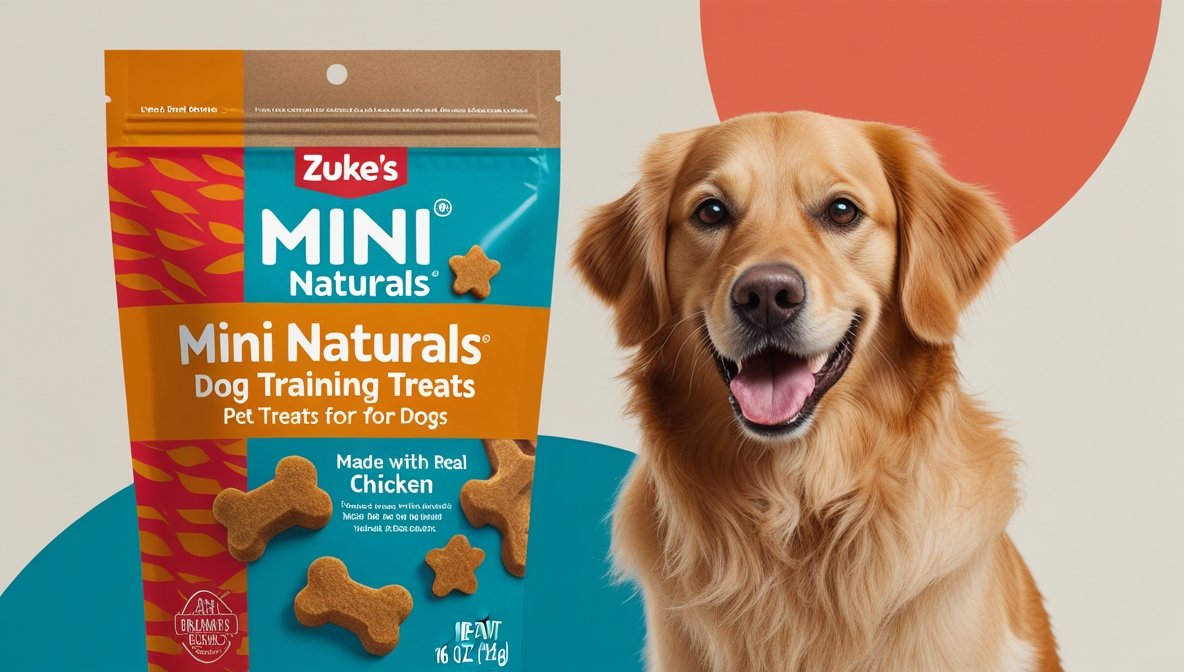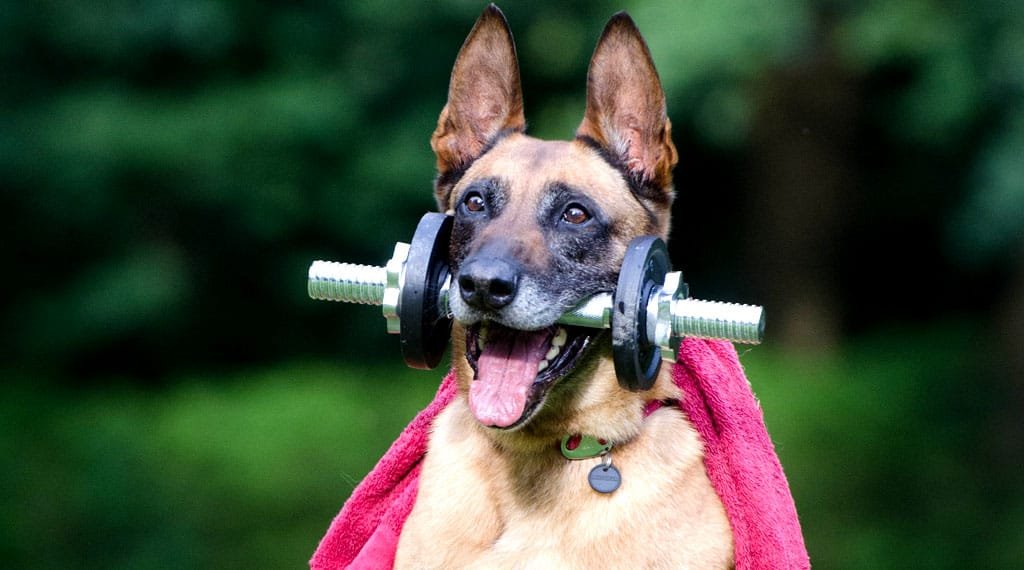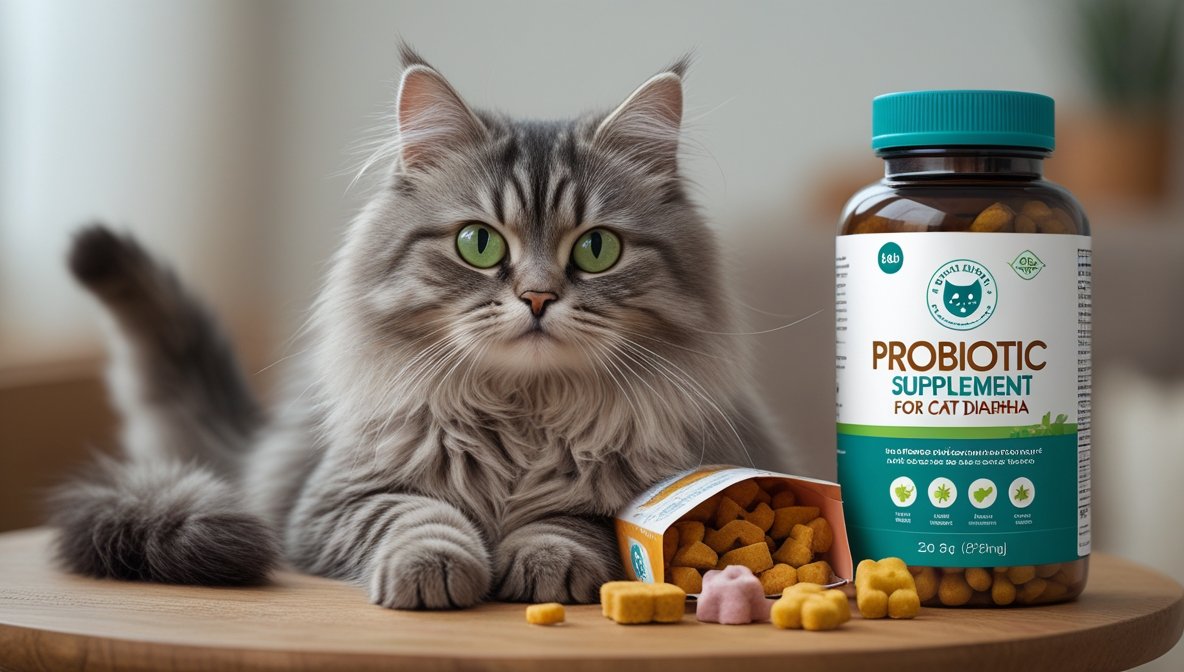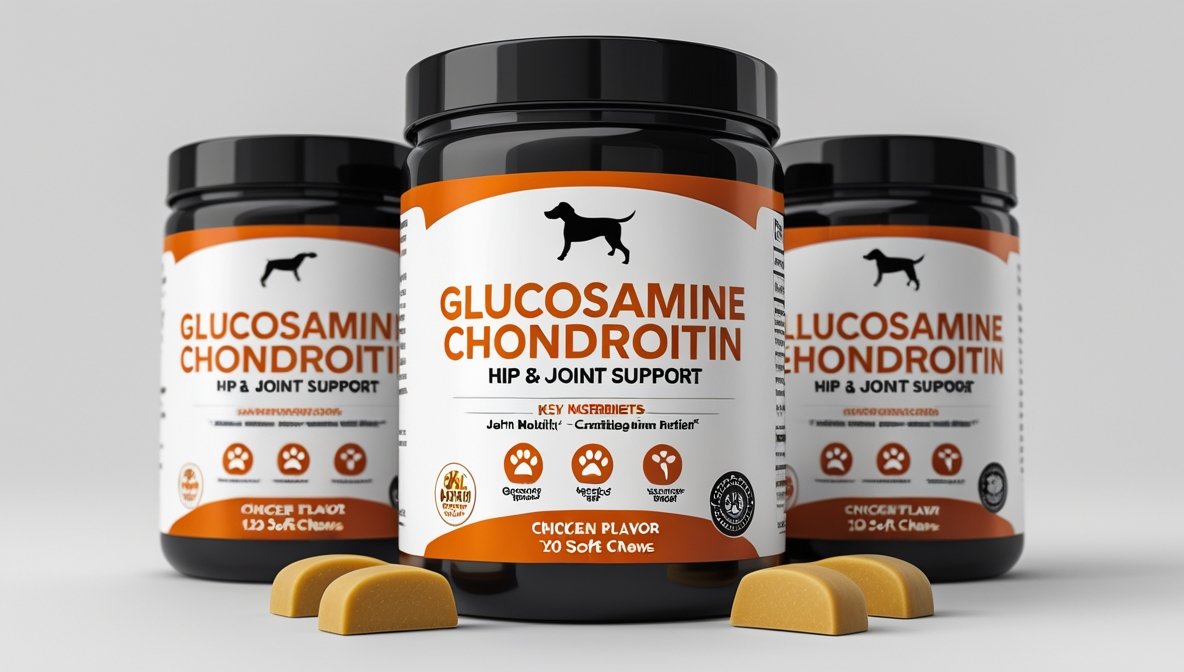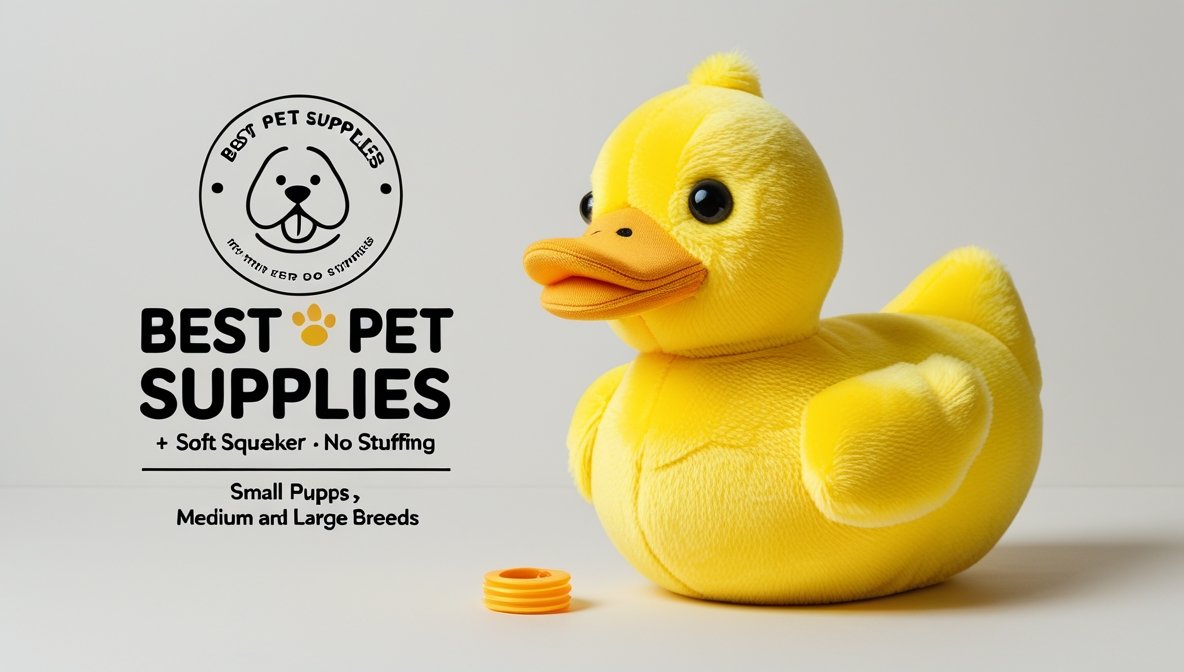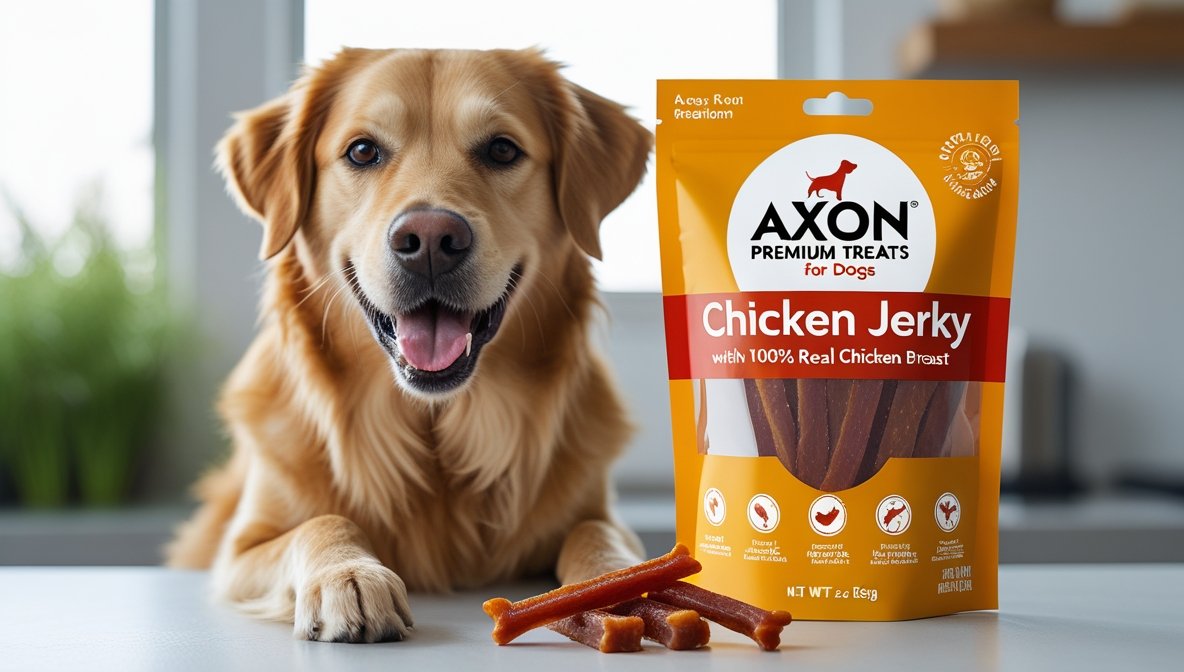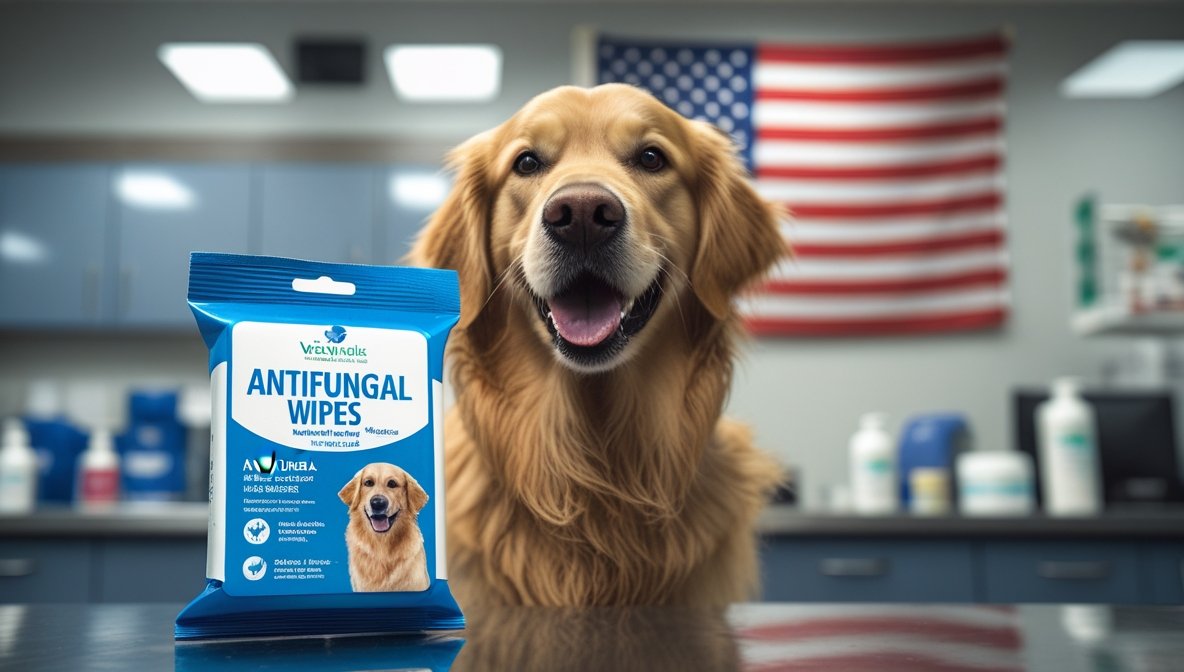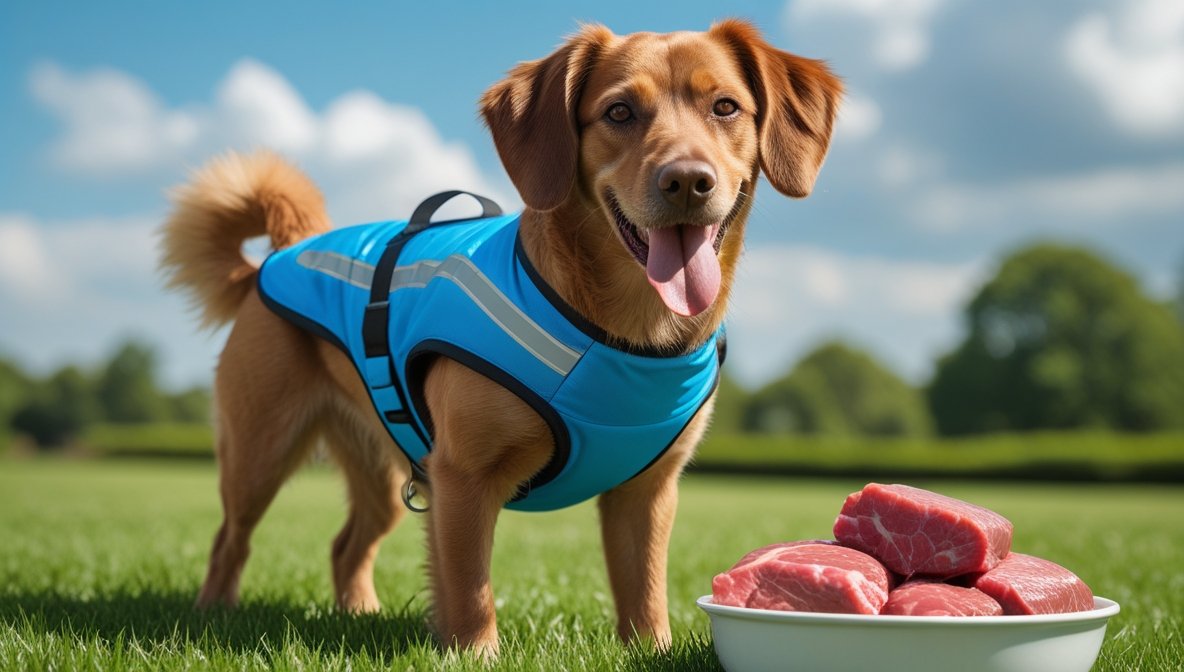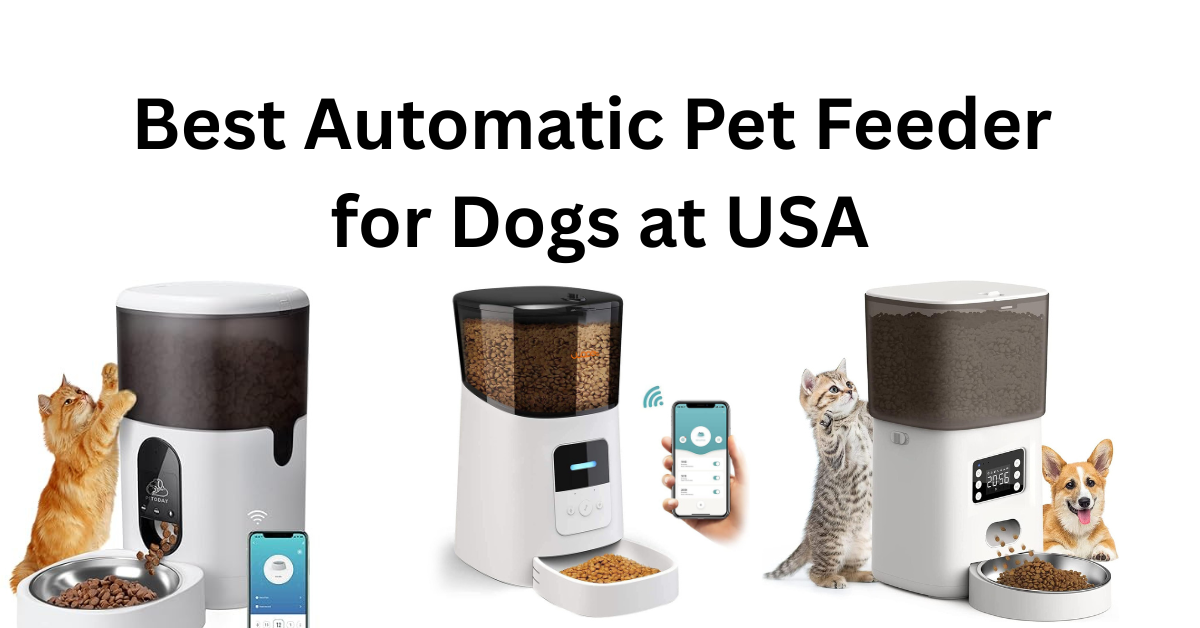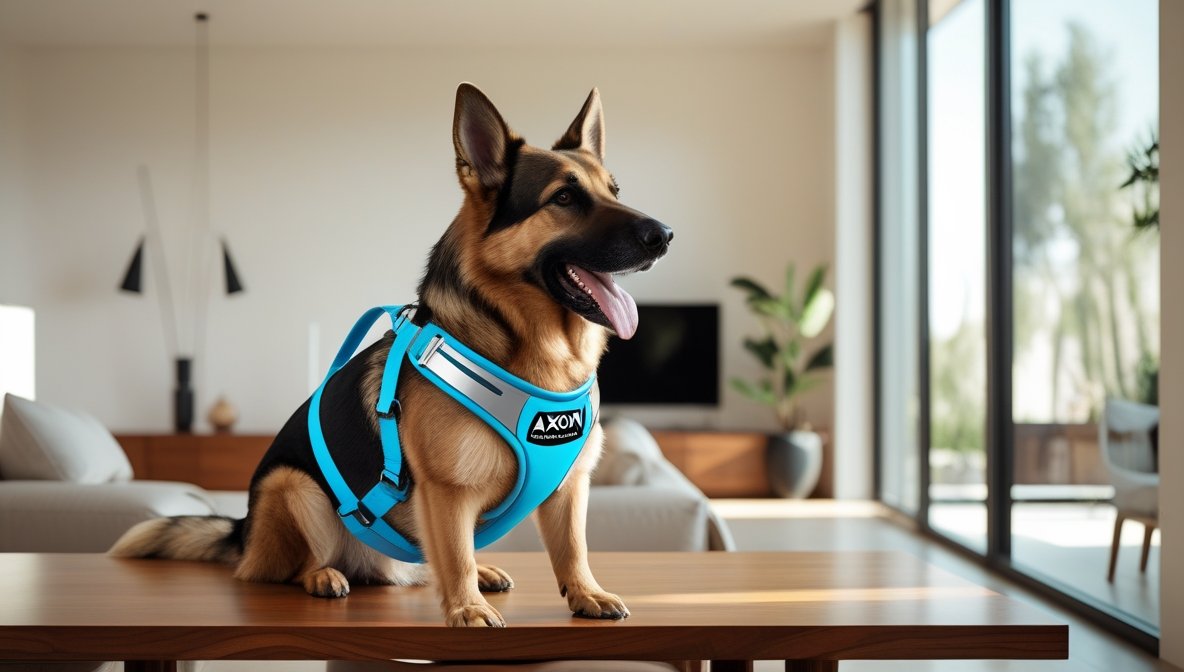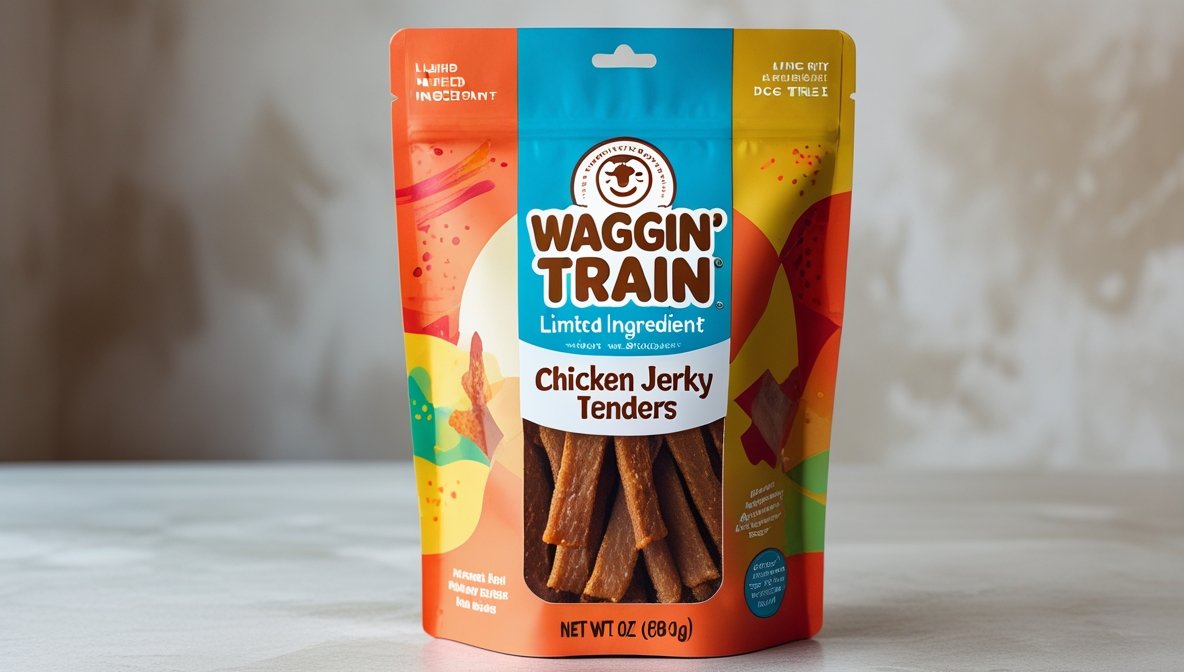Dog skin is naturally home to fungi and yeast, which can overgrow under certain conditions. When a dog’s immune system is weak or its skin environment changes (warm, moist), common fungal issues can flare up. For example, ringworm (a contagious dermatophyte) and yeast (Malassezia) infections often cause symptoms like hair loss, itchiness, and flaky or greasy skin. PetMD notes that yeast overgrowth (“fungal infection” or Malassezia dermatitis) leads to a musty odor, greasy coat, flaky or thickened skin, and hair loss. Yeast on the paws can turn the fur between toes brown from excessive licking. Veterinary studies confirm that such infections are very common in dogs. Treating them quickly is important: Pets with unexplained scratching or odd paw-licking should see a vet to diagnose fungal vs. other causes.
In many cases, antifungal wipes for dogs provide a simple, targeted way to manage these skin conditions. Medicated pet wipes are pre-soaked pads infused with antibacterial and antifungal agents (like chlorhexidine, ketoconazole, or miconazole) that clean the skin, kill yeast and germs, and soothe irritated areas. For instance, PetMD explains that “paw yeast infections may benefit from medicated antifungal wipes and oral medications”. highlighting wipes as a useful topical therapy. These wipes let you directly treat localized hotspots, ear edges, skin folds and paw pads without the mess of a full bath. In this guide (USA-, Canada-, Mexico- and Europe-focused), we cover everything you need: how these wipes work, what to look for, top products, and usage tips antifungal wipes for dogs.
- MEDICATED CAT & DOG WIPES: Ketoconazole & Chlorhexidine wipes for cats & dogs treat & eliminate skin infections. Great f…
- PERFECTLY SIZED: These chlorhexidine wipes for dogs and cats are wet, small (2.5”x2.5”) and thin enough to fit every cre…
- SOOTHING WIPES: Effective active ingredients with soothing Aloe and Essential Fatty Acids help soothe infected areas. Gr…
Common Fungal Infections in Dogs
- Yeast (Malassezia) Dermatitis: Yeast normally live on dog skin harmlessly, but allergies, hormonal imbalances or moisture can let them overgrow. This causes intense itching, redness, and a “Frito” musty smell. Dogs may develop greasy, flaky patches and odor. Infected paws often show constant licking and brown discoloration between the pads. Yeast infections are not contagious to people or other pets, but they often recur if underlying issues (like allergies) aren’t addressed.
- Ringworm (Dermatophyte) Infections: Ringworm is a misnomer – it’s a fungal infection of the skin, hair, or nails caused by fungi like Microsporum. In dogs it often appears as circular patchy hair loss with crusting or scaling. Ringworm spreads readily between pets and humans, so quick treatment is critical. Vets typically confirm ringworm by lab tests and recommend medicated dips or shampoos, but wipes with antifungals can help as part of treatment. PetMD explains that ringworm “can affect a dog’s skin, fur, and nails,” with symptoms of hair loss, itching, flaky crusty skin, and brittle nails.
- Hot Spots and Bacterial Dermatitis: Though not purely fungal, many “hot spots” (acute moist dermatitis) involve bacteria, yeast, or both. Antifungal/antibacterial wipes can help clean these areas. Common triggers include moisture, allergies, and underlying infections. The wipes help break the cycle of irritation antifungal wipes for dogs.
PetMD emphasizes that every pet is at risk for fungal skin issues and needs an accurate diagnosis for proper treatment. Rather than just guessing or relying on a human antifungal, use a veterinarian-recommended antiseptic or antifungal wipe specifically formulated for antifungal wipes for dogs.
How Antifungal Wipes Work
Antifungal dog wipes are convenience medicated pads: they deliver active ingredients directly to affected areas, which helps kill fungi/yeast and cleanse the skin. According to one pet health guide, medicated wipes can “reduce symptoms in hard-to-reach places” and offer “deep cleansing”. Key benefits include:
- Targeted Treatment: Wipes allow you to apply medication exactly where it’s needed – between paw pads, in skin folds, ear rims, or hotspots. This is easier than bathing the whole dog, especially for small spots antifungal wipes for dogs.
- Convenience & Speed: They’re pre-moistened and ready to use on the go. No mixing of powders or dips.
- Soothing & Clean: Many wipes include soothing botanicals (aloe, essential fatty acids) to calm irritation. They also remove dirt, debris and allergens that can worsen infection.
- Dual-action: Antifungal wipes often contain antiseptic agents too, combating bacteria along with fungi. This is important since skin infections often involve both antifungal wipes for dogs.
- Preventive Care: Regular use on problem areas can prevent flare-ups. For example, wiping paws after outdoor walks can wash away irritants and early yeast buildup.
Veterinary advice supports using wipes for localized skin issues. PetMD notes that even paw yeast infections “may benefit from medicated antifungal wipes” as part of treatment. One controlled study in Europe demonstrated that daily wipes with chlorhexidine and climbazole dramatically “substantially reduced the M. pachydermatis population on the skin of dogs,” making them useful for treating yeast dermatitis on lips, paws and skin folds. In practice, you’ll often see improvements (less itching, odor and redness) within a week if fungal overgrowth is the culprit.
Veterinarians caution, however, that wipes alone are sometimes not enough. Many guidelines still recommend medicated baths (shampoos) for ringworm/yeast. In fact, a recent consensus found that a 2% chlorhexidine + 2% miconazole shampoo was the only topical treatment with “strong evidence” for Malassezia dermatitis. Nonetheless, wipes are an excellent adjunct to bathing and oral therapy – they reach small crevices and can be used daily antifungal wipes for dogs.
Key Ingredients in Antifungal Wipes
When choosing antifungal wipes, check the active ingredients. The most effective formulas combine antiseptic and antifungal agents:
- Chlorhexidine: A broad-spectrum antiseptic. At ~2% concentration it kills bacteria and yeast on contact. For example, Durvet’s wipes contain 2% chlorhexidine gluconate, providing deep cleansing. Many vet-recommended dog wipes (e.g. Bully Beds or Smiling Paws) use chlorhexidine as their first ingredient. It has “bactericidal and yeasticidal efficacy,” meaning it fights both bacteria and yeast.
- Ketoconazole or Miconazole: These are potent antifungal (azole) drugs. Ketoconazole 1–2% or miconazole 2% are common in wipes. They disrupt fungal cell membranes, killing the yeast/ringworm fungus. For example, Bully Beds’ wipes are formulated with 1% ketoconazole (alongside chlorhexidine). Nootie’s medicated wipes contain 2% miconazole plus 2% chlorhexidine. Studies recommend that combination (chloro + azole) for best results antifungal wipes for dogs.
- Climbazole or Clotrimazole: Alternatives to ketoconazole/miconazole, also in the azole class. The Europe study used 0.5% climbazole with chlorhexidine and had great success. Some pet brands may use climbazole instead.
- Aloe and Soothing Botanicals: Many wipes add aloe vera, vitamin E or essential fatty acids to moisturize and calm irritated skin. For instance, Smiling Paws wipes include aloe to soothe infected spots. These ingredients help reduce itching and prevent drying.
- pH-balancing formulas: Good dog wipes are formulated for canine skin pH (~6.2–7.4), not human skin. This prevents irritation. One pet-care manufacturer notes that dog skin has a higher pH than human skin, so specialized products should be used. (Avoid human baby wipes, which are too acidic for dogs.)
- Free from Harsh Chemicals: Quality wipes avoid parabens, alcohol, or artificial fragrances that can irritate pets. Look for vet-approved, hypoallergenic labels antifungal wipes for dogs.
In summary, the ideal antifungal dog wipe contains a chlorhexidine antiseptic (at 2% or higher) plus an azole antifungal (ketoconazole, miconazole, or climbazole), with calming extras like aloe. These ingredients work together to kill the fungus and heal the skin. (For reference: Durvet’s veterinary wipes list 2% chlorhexidine and 1% ketoconazole on their label and research also highlights chlorhexidine+azole as a strong combo.
Benefits of Antifungal Wipes
Medicated antifungal wipes offer multiple advantages over plain cleaning cloths or just topical creams:
- Quick Relief of Itching: They start reducing itching and discomfort almost immediately by killing microbes and soothing inflammation. For example, a pet wellness guide notes that medicated wipes can quickly “reduce symptoms (itching, redness)” in targeted areas.
- Prevent Spread of Infection: Regular wiping of ears or feet can interrupt the cycle of fungus spreading. Wipes reach places baths or shampoos might miss (like between toes or deep skin folds).
- Maintain Hygiene: By removing dirt and debris, the wipes help healthy skin and new fur grow back clean. They also neutralize odors caused by bacteria/yeast antifungal wipes for dogs.
- Safe & Gentle: Unlike some over-the-counter cleaners, these wipes are formulated for pets and often include gentle ingredients. Many products are safe enough to use on puppies and even older dogs with sensitive skin (always check labels). Several brands note their wipes are “safe for all life stages” of dogs and include moisturizing elements to prevent dryness.
- Versatile Use: The same wipe can treat hot spots, ringworm patches, yeast in skin folds, ear edges, and even minor wound cleansing. Brands advertise their dual-action (antibacterial + antifungal) wipes for “skin infections, ringworm, yeast overgrowth, hotspots, and ear infections”.
- Easy Application: Many pet owners find wipes less stressful than baths. Wiping on medication is simpler for dogs who hate being soaked. For instance, Bully Beds emphasizes how their pre-moistened wipes offer “quick & convenient relief… treating affected areas like skin folds, paws and hot spots without any mess or hassle.
Overall, antifungal wipes are a value-driven solution: they directly address yeast/fungal problems, improve pet comfort, and keep skin clean, with minimal effort antifungal wipes for dogs.
Choosing the Right Antifungal Wipes
When shopping for antifungal dog wipes, consider these factors:
- Active Ingredients: As above, look for wipes listing chlorhexidine and an azole (ketoconazole/miconazole/climbazole) among their active ingredients. This combo is “veterinarian-trusted”. Avoid products that only have herbal extracts or dilute ingredients – they won’t be as effective against serious infections.
- Thickness & Size: Wipes come in various sizes. For big dogs or deep crevices, larger, thicker wipes may cover more area. Some brands sell extra-large wipes (e.g. PetMD XL wipes). Make sure the wipe is wet enough to transfer the meds, but not so thin that it tears. Amazon reviewers often praise “thick, durable” wipes versus paper-thin ones.
- Scent & Additives: Choose unscented or lightly scented (e.g. with natural aloe) products. Fragrances can irritate already-sensitive skin. Many medicated wipes for dogs are fragrance-free or use essential oil calming scents only antifungal wipes for dogs.
- Skin Compatibility: Check that wipes are specifically formulated for dogs (and cats). Human antiseptic wipes or baby wipes usually have inappropriate pH and additives. Some products explicitly say “safe for dogs and cats.” For example, Nootie’s wipes are labeled for both cats and dogs so they balance safety.
- Trustworthy Brands: Petsmart and other major retailers often carry known pet brands. Bully Beds, PetMD, Smiling Paws, Nootie, KetoWELL, and others have positive reputations. Vet clinic or pharmacy brands (like Durvet/Animal Health Supply) are often reliable formulations (see Durvet 2% chloro/1% keto wipes. Also consider veterinary dermatology brands sold in Europe, like Douxo S3 Pyo (chlorhexidine 3% shampoo/pads) though availability may vary by region antifungal wipes for dogs.
- Made in USA/Regulated Facilities: Some users prefer products made in regulated US facilities. For example, Smiling Paws and Bully Beds note their wipes are “made in the USA” under federal oversighs. This can be a trust factor for quality control antifungal wipes for dogs.
- Veterinarian Recommendations: Don’t hesitate to ask your vet. PetMD and pharmacy brands (like PetMD wipes) are often sold at PetSmart/Petco and used by clinics. A quick vet consult can narrow down the right active ingredient strength for your dog’s size and condition.
In general, avoid wipes that are marketed only as “cleaning wipes” with vague claims. For antifungal purposes, you need medicated wipes with clear antimicrobial ingredients. Always read the packaging and follow instructions.
Top Antifungal Wipes for Dogs
Below are some of the best-selling, vet-recommended antifungal wipes (many available in the USA, Canada, Mexico and Europe via online retailers or pet stores):
- Nootie Medicated Antimicrobial Wipes (Dog & Cat): Contain 2% chlorhexidine + 2% miconazole These vet-strength wipes cleanse and help heal skin infections (bacterial, fungal or yeast). The brand notes they are “ideal for pets with ringworm” and can prevent hot spots when used early. Many owners praise them for reducing itch within days. (Available on Amazon and vet supply sites antifungal wipes for dogs.
- Smiling Paws Pets Antibacterial & Antifungal Wipes: Infused with chlorhexidine & ketoconazole, these treat “infected areas” of dogs and cats. They are thin yet effective, specifically calling out use on dog paws and other crevices. Made in the USA, they have soothing aloe and promise to help combat “dog yeast infection, fungus, bacteria, mange, ringworm, hotspots & pyoderma” (Good for multi-pet households.)
- KetoWELL Topical Wipes (Ketoconazole 2%): These medicated wipes contain 2% ketoconazole, a powerful antifungal. They are recommended by vets for easy spot treatment of skin infections KetoWELL emphasizes “easy to use, great for hard-to-reach areas” and notes they are made in the USA. Many reviews report success on persistent yeast or ringworm when other products failed. Available online (Amazon, Chewy) and through some vet channels.
- Natouch Antifungal & Antibacterial Pet Wipes: A natural-based option, enriched with geraniol, rosemary oil, neem oil and chamomile to soothe skin. Natouch wipes are alcohol-free and organic. They advertise effectiveness on ringworm and allergy dermatitis. While gentler, they still claim to help “promote better skin & coat”. Ideal for dogs that react to synthetic chemicals, though for severe fungal cases the ketoconazole wipes above may work faster antifungal wipes for dogs.
- Bully Beds Medicated Wipes (Chlorhexidine + Ketoconazole): Produced by a well-known pet brand, these wipes contain 2% chlorhexidine gluconate + 1% ketoconazole. They highlight a “dual-action” vet-trusted formula that combats bacterial and fungal infections in one step. Bully Beds emphasizes quick relief and gentle soothing for itchy hotspots, paws, folds, etc. These are sold on Bully Beds’ site and Amazon. The wipes are hypoallergenic and suitable for frequent use antifungal wipes for dogs.
- Durvet / PBS Antiseptic & Antifungal Wipes: Often sold through pet pharmacies or online (such as Animal Health Supply), these vet-grade wipes list 2% chlorhexidine + 1% ketoconazole. They are used in clinics for deep cleansing of folds, paw pads, and wound sites. Durvet instructions recommend wiping affected areas and letting dry, avoiding licking. This product is essentially a professional version of Smiling Paws/Bully Beds antifungal wipes for dogs.
- DOUXO® S3 PYO Pads (Chlorhexidine 3%): From a European pet dermatology line, these are pre-moistened pads (wipes) that contain 3% chlorhexidine. They are designed to reduce bacteria and yeast overgrowth while hydrating skin. While primarily shampoo/mousse products, the DOUXO S3 pads (sold through vets/pet pharmacies in Europe and North America) are an example of antiseptic wipes validated by vet dermatologists.
Where to Buy: Many of the above brands are available on Amazon.com (USA, Canada, Mexico) or Amazon’s European sites. U.S. pet chains like PetSmart and Petco often stock PetMD and Nootie wipes, as well as their own-brand medicated wipes. Online retailers (Chewy, Walmart) and vets’ offices are good sources for specialty formulas like KetoWELL or DOUXO. In Mexico, look at Petco Mexico or online marketplaces for imported wipes. In Europe, pet pharmacies and websites carry local brands (e.g. TopVet, DOUXO) and sometimes American imports antifungal wipes for dogs.
Using Antifungal Wipes Safely
- How to Apply: First, gently clean the area if it’s very dirty. Wipe the medicated pad over the affected skin, making sure the antifungal agents contact the lesion. For paw infections, e.g. lift the paw and wipe between all toes and pads. Repeat once or twice daily (as directed on product) for up to 7–10 days or until symptoms improve. Some vets recommend daily use until the rash clears antifungal wipes for dogs.
- Avoid Eyes and Ingestion: Don’t use on eyes, mouth or genitals. If using near the face or ears, be careful around the eyes. Most instructions advise preventing licking the wipe in the area until it dries. You can fasten a belly band or temporarily hold the area still. Chlorhexidine can irritate if ingested.
- Monitor and Protect: If your dog has sandals or booties, you might use those after wiping paws to prevent immediate contamination from dirt. Keep the dog in a clean, dry environment until the area dries antifungal wipes for dogs.
- Duration of Use: In most cases, daily use for about a week is sufficient to see improvement. If no change occurs in 7–10 days, consult your vet – there might be an underlying issue (allergy, bacteria) or need for oral antifungals. Even after clearing up, you may use wipes weekly for maintenance on at-risk areas (like paws during wet seasons).
- Underlying Causes: Remember, wipes treat the symptoms, not causes. If your dog has recurrent infections (e.g. due to allergies or immune issues), discuss long-term management with a vet. In the meantime, antifungal wipes help relieve symptoms fast.
- Puppies and Seniors: Many medicated wipes are safe for all life stages. For example, Nootie explicitly states their wipes are suitable for puppies through seniors. However, always check each product’s age recommendations. For very young puppies, ask a vet. In general, these wipes have low systemic absorption and are considered safe when used externally antifungal wipes for dogs.
- Human vs. Pet Wipes: While human antifungal wipes exist (for athlete’s foot or ringworm on people), they often use different strengths and additives. Do not substitute dog wipes with human wipes. Dog skin has a different pH and thickness. Pet products are formulated for canine skin (as one source notes, human wipes can disrupt dog skin’s pH balance. Likewise, don’t use dog wipes on yourself. Stick to products labeled for dogs to ensure safety.
- Frequency & Storage: Keep wipes in their resealable container to stay moist. Most instructions say use daily and discard after 7–10 days once opened (to avoid contamination). Store at room temperature away from sunlight antifungal wipes for dogs.
If used as directed, antifungal wipes are a convenient way to support your dog’s skin healing. Always follow the product label and your vet’s advice.
FAQs (Antifungal Wipes for Dogs)
- Q: What do antifungal dog wipes treat?
A: They treat topical fungal infections (yeast, ringworm) and often bacterial infections on a dog’s skin. Wipes with chlorhexidine + an azole kill yeast and disinfect the skin. They are used on itchy skin, hot spots, red paws, ear rims and other infected areas antifungal wipes for dogs. - Q: How quickly will my dog improve with antifungal wipes?
A: Many dogs show reduced itching and odor within a few days of consistent use. In a research study, wipes significantly reduced skin yeast in just 30 minutes after application and daily use further suppressed growth. Typically, use for 5–10 days and the infection should clear; otherwise consult your vet. Keep using until symptoms fully resolve to prevent relapse. - Q: How often should I use the wipes?
A: Generally once per day is sufficient. Some severe cases might use twice daily. The manufacturer instructions vary: e.g. Durvet recommends wiping 1–3 times a day as needed. Overuse beyond instructions can irritate skin, so stick to the label. - Q: Are antifungal wipes safe for puppies and senior dogs?
A: Yes, most are safe for all life stages. For instance, Nootie wipes are labeled “suitable for all life stages”, including puppies and seniors. However, for very young or health-compromised pets, check with your vet first. If your dog has sensitive skin, choose an unscented, gentle formula. - Q: Can I use an antifungal wipe on my human?
A: No. Wipes formulated for dogs often have higher concentrations of active ingredients and are pH-balanced for canine skin, not human skin. Use only human-approved antifungal wipes on yourself. Similarly, don’t use baby or human wipes on your dog, as they may irritate canine skin. - Q: Can these wipes help with ear yeast infections?
A: Antifungal wipes are designed for external body use (paws, folds, hotspots). They can clean around the base of the ear or outer ear if gently wiped there, but you should not insert them into the ear canal. For ear infections, use vet-prescribed ear drops specifically designed for ears. Wipes can complement ear cleaning on the visible outer areas antifungal wipes for dogs. - Q: Where can I buy antifungal dog wipes?
A: In the USA and Canada, look for them at PetSmart, Petco, major pet stores, or online retailers (Amazon, Chewy). The brand PetMD often sells antiseptic/antifungal wipes at these stores. In Mexico, check Petco MX or online marketplaces. In Europe, vet clinics and pet pharmacy sites carry brands like Douxo or local equivalents. Always buy from reputable sellers to ensure product quality. - Q: Do I still need shampoo/meds if I’m using wipes?
A: Wipes are usually part of a combined approach. For widespread infections (whole body), vets may still recommend medicated baths or oral meds. However, for localized or mild cases, wipes alone might suffice. They are ideal for spot cleaning (ears, feet) in between baths. If your dog’s condition doesn’t improve, a full vet visit is warranted. - Q: Can antifungal wipes prevent infections?
A: Routine use of wipes (e.g. weekly) on high-risk areas (feet in rainy season, folds in humid dogs) can help prevent yeast/bacterial buildup. Some owners wipe paws after walks to remove allergens and reduce yeast triggers. While not a guaranteed prevention, it is a good hygiene practice mentioned by groomers and vets antifungal wipes for dogs. - Q: Are there any side effects?
A: Generally very safe. Some dogs might experience slight stinging if the skin is very raw; aloe in the formula usually calms that. Rarely, dogs allergic to chlorhexidine (very uncommon) could develop irritation. If redness worsens, stop use and see a vet. Always avoid the eyes/mouth to prevent burning.
Conclusion
Antifungal wipes for dogs are a targeted, convenient way to combat yeast and fungal skin infections. By using chlorhexidine and antifungal drugs in wipe form, these products clean infected spots and help relieve itching and odor. We’ve seen how common Malassezia (yeast) and ringworm are in dogs and vets recommend wipes as part of treatment. When choosing wipes, look for those with proven actives (2% chlorhexidine + an azole) and gentle, pet-safe formulas. Top picks like Smiling Paws, Nootie, KetoWELL or Bully Beds all contain these key ingredients and are widely available in the USA, Canada, Mexico and Europe antifungal wipes for dogs.
- MEDICATED CAT & DOG WIPES: Ketoconazole & Chlorhexidine wipes for cats & dogs treat & eliminate skin infections. Great f…
- PERFECTLY SIZED: These chlorhexidine wipes for dogs and cats are wet, small (2.5”x2.5”) and thin enough to fit every cre…
- SOOTHING WIPES: Effective active ingredients with soothing Aloe and Essential Fatty Acids help soothe infected areas. Gr…
In summary, antifungal wipes for dogs can provide quick relief for itchy paws, hotspots and skin folds. They aren’t a standalone cure-all for underlying allergies, but they significantly improve comfort and cleanliness. Follow product instructions, maintain good grooming habits (keep paws dry, address allergies), and consult your veterinarian as needed. With the right antifungal wipes and care routine, your furry friend’s skin will stay healthier and infection-free antifungal wipes for dogs.

